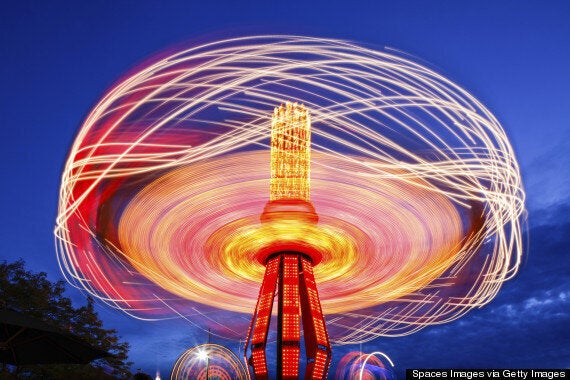It's not difficult to slow down light: all you need to do is look at it through a glass of water.
Of course, slowing down light in a vacuum is a little more tricky. The speed of light is a universal constant (it's about 186,282 miles per second) and there's not very much we can do to change that, since it's pretty much baked into the fabric of the universe.
Or is there?
Scientists say they have found a way to slow down light in a landmark experiment that literally 'raced' photons of different shapes.
The team made up of researchers from Glasgow and Heriot-Watt universities published their findings in the journal Science.
In the experiment, which took two years, the team was able to take a single photon - a particle that makes up light - and change its shape so that it slowed down under the maximum speed for light.

The researchers describe how they built a 'racetrack' for two photons, one of which was left to travel normally and the other which passed through a 'mask' designed to slow it down by changing its shape.
Normally after passing through a medium which slows its speed, light immediately resumes its maximum velocity.
But in the experiment the photon travelled slightly more slowly along the one metre track. The difference was only a few millionths of a metre, the BBC reports - or about 0.001% of the speed of light - but it was enough.
The effect is caused by a fundamentally different effect than light slowing in a material.
Daniel Giovannini, one of the lead authors of the paper, said: “The delay we’ve introduced to the structured beam is small, measured at several micrometres over a propagation distance of one metre, but it is significant. We’ve measured similar effects in two different types of beams known as Bessel beams and Gaussian beams.”
It all comes down to the mask through which the photon passes.
"That mask looks a little bit like a bull's-eye target," said Prof Miles Padgett. "And that mask patterns the light beam, and we show that it's the patterning of the light beam that slows it down."
The 'patterning' of the photon is possible because it is a quantum particle - existing also as a wave. The team told MyScience that it is useful to think of a peloton in a cycle race. Where the beam is the group, travelling at a constant speed, within it individual photons are able to jostle at different speeds. Their work demonstrates simply how one of those photons might be caused to slow down even as the beam itself remains constant.
"But once that pattern has been imposed - even now the light is no longer in the mask, it's just propagating in free space - the speed is still slow."
There are currently no known applications for the idea, but Dr Giovanni is interested to see what happens next. "Who knows?" he told the Beeb.